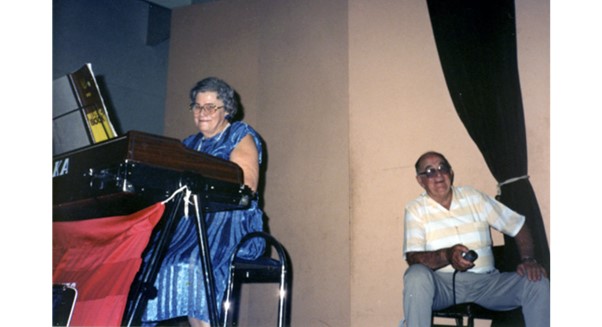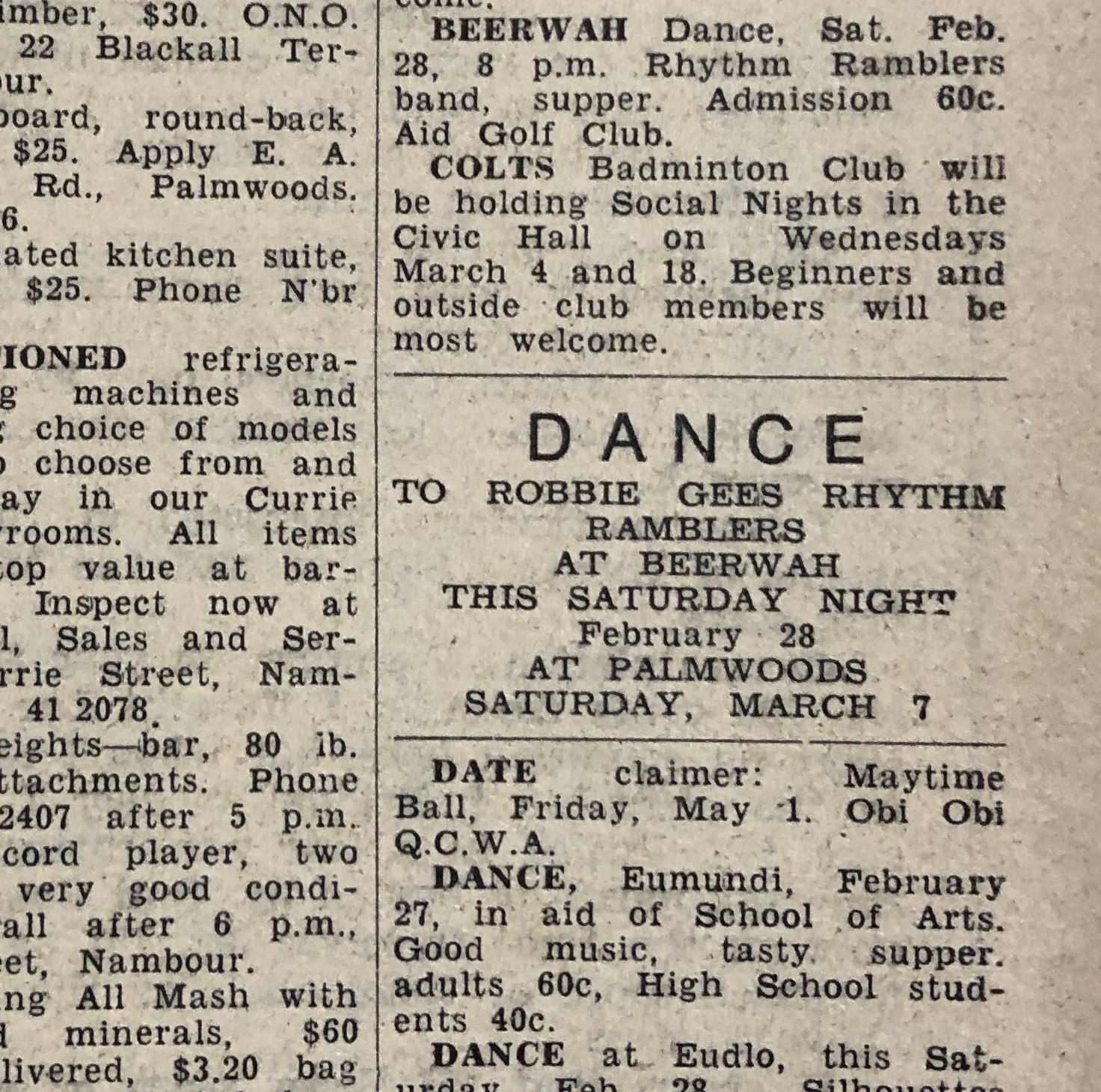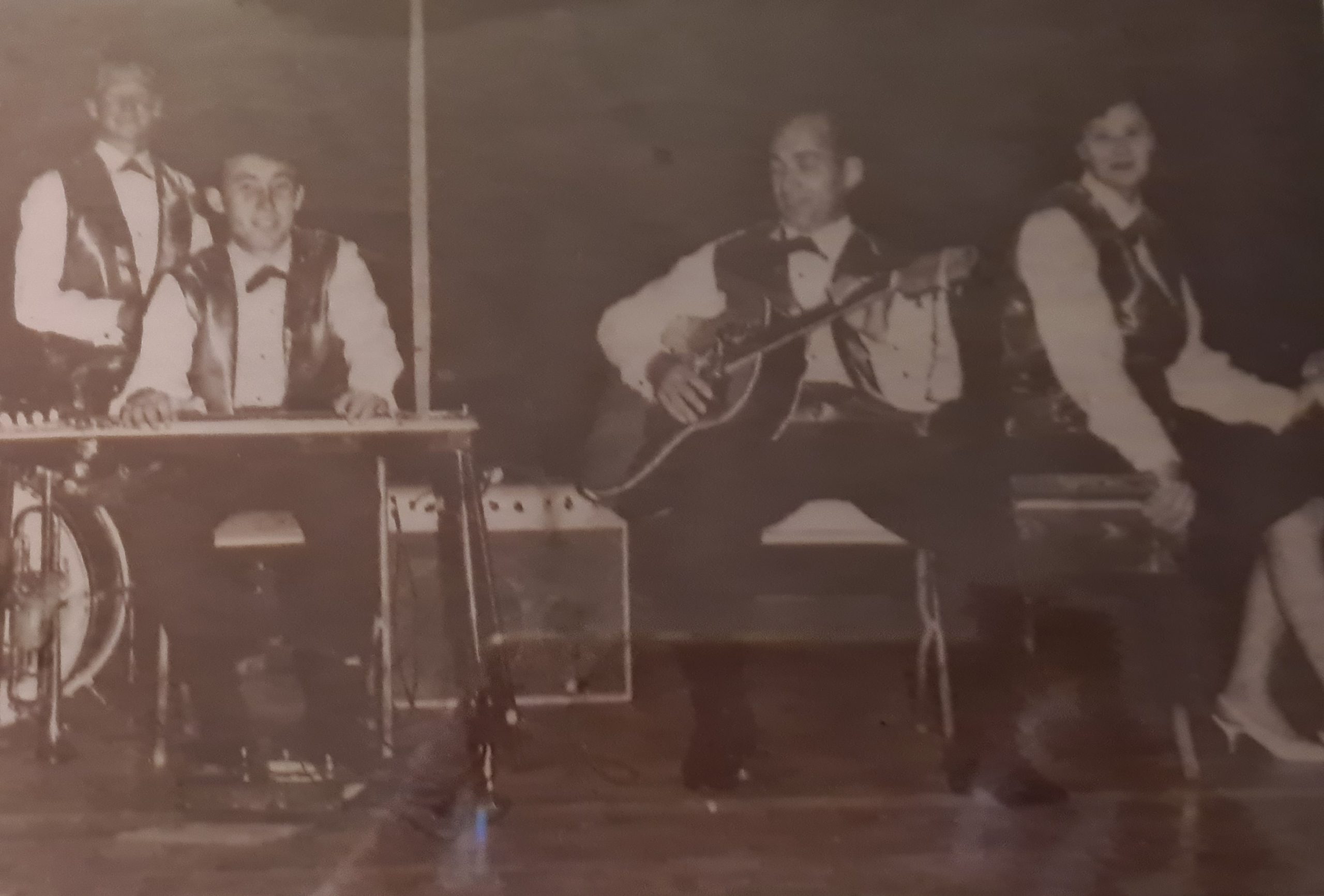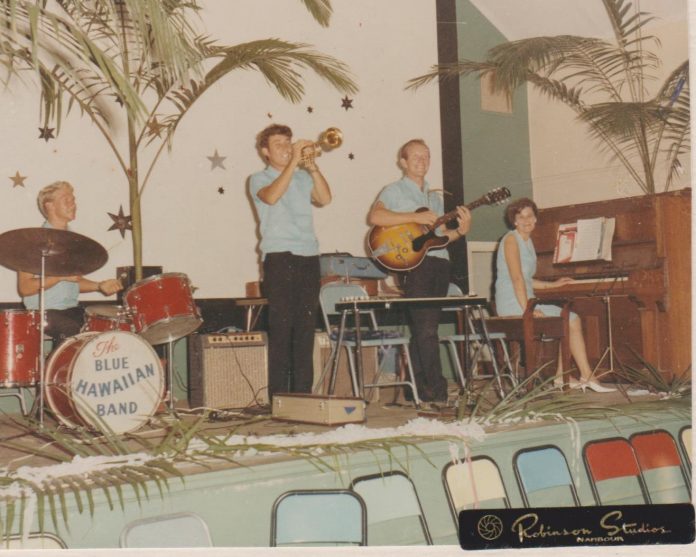The hall’s old floorboards had been liberally sprinkled with Pop’s, chairs placed around the walls, and the urn in the supper room turned on.
The stage was set, the doors opened, and in swept the dancers – women in their best frocks and heels, men in crisp shirts and (very thin) ties, if not a suit.
Soon they were gliding across the floor to a slow waltz and spreading the Pop’s underfoot until the surface was like glass.
It was 60/40 dance time in country halls around the Sunshine Coast, from Conondale to Belli, Beerwah to Yandina but it was the fortnightly “Palmwoods Dance” that topped the bill.
More than 400 dancers of all ages would come from miles around to evening three-step, jive and gypsy tap until the stroke of midnight when the band played “Now is the Hour” and, exhausted but satisfied, dancers set off home until next time.
With supper included, it was good value for 50 cents.
Ivy and George Garrad (pictured below) and the Blue Hawaiians would repeat the program at Beerwah the following week, and often on Friday nights at the Yandina or Maleny School of Arts, the Nambour Friendly Society Hall, and halls at Belli and Pomona.

There was a ball in Conondale for the picnic races and in Kenilworth for the rodeo and even Buderim got in on the act.
In the days long before Tinder, the country dance was the place for courtship and young women were, literally, swept off their feet. It was a satisfying ritual.
Young men, travelling in groups of at least two or three, would enter the hall and survey the talent lining the hall’s perimeter, before homing in and asking for the next dance as the band struck up.
Love nostalgia? So do we. Help keep more great Coast memories alive by subscribing to our free daily news feed. Go to Subscribe at the top of this story and add your name and email. It’s that simple.
For the girls, there was the fear of being the wallflower, sitting out the dance because they hadn’t caught anyone’s eye, but many a match made on the dance floor ended at the altar.
Most popular was the progressive barn dance, swinging from sweaty palm to sweaty palm with a chance to meet everyone on the floor – dancers of all ages and abilities from the hills and the coast, farmers, surfies and townies.
The Blue Hawaiians formed in 1964 with Ivy Garrad at the piano and George as MC and in one form or another, their bands entertained the Coast for the next three decades.
Dave Richardson was only 16 when he joined them playing steel guitar, Neil Jensen was on rhythm guitar and 14-year-old Ross Baldwin was drummer.

When Dave’s number came up on the conscription ballot for National Service in 1967, and there was no longer a steel guitar, the band became Robbie Gee’s Rhythm Ramblers, with George and Ivy’s son Robbie on drums. Also joining the line-up in 1969 was Rex Eggmolesse and his brother Bryce, and Adrian Van Galen.
Rex, who quickly made a name for himself as a gifted and much-loved vocalist, also got the call-up, although soon after, Australia began withdrawing from Vietnam and Gough Whitlam’s election in 1972, brought an end to the “lottery of death”.
For many teenagers during the 1970s, the Palmwoods Dance was the main venue for a Saturday night out.
As one regular reminisced: “Other than the dancing, I loved the singing along (terribly) to the songs we knew and liked, as poor Rex was doing it properly and tried to be heard. ‘By the light of the silvery mooooo-ooon’ comes to mind.”
As the mood warmed up, the dancing became more energetic. The Gypsy Tap turned from a gentle swing to a raucous run and slide from one end of the hall to the other as the band belted out “the cutest little baby face”, “roll out the barrel” or “put another log on the fire.”
Conga lines formed to the tune of Running Bear and Little White Dove’s love as big as the sky.
It was a long way from the Palmwoods dances of the 1930s when women wore elegant gowns and carried a dance card and the men wore gloves so they didn’t mark their partner’s gown – but the lights were always on.
Supper was as popular as the dancing and was usually in at least two sittings.
Exhausted dancers would file into the supper room for tea and sangers and, most relished, cakes from the huge selection from the kitchens of the local ladies doing their bit for community fundraising.
After supper, on a full belly, the music got faster for a jive as the band belted out Rock Around the Clock and Sloop John B.
It was always the music of the generation and often the ones before as well.

“Delilah always got them going,” Dave Richardson recalls. “We could change the beat for songs to be danced to.”
For many, matches were made to “Ob-La-Di, Ob-La-Da” from The Beatles, Olivia Newton John’s Banks of the Ohio or The Seekers singing about a New World.
As hotels became more popular, younger people wandered off to other entertainments and by the 1990s, the dances were no longer a place for a date, raucous fun and children sleeping under the chairs.
New vogue took over with only serious dancers taking the floor. It signalled the beginning of the end of the country dance.
This flashback is brought to you by Sunshine Coast journalist and history writer Dot Whittington, also the editor of Your Time Magazine.





